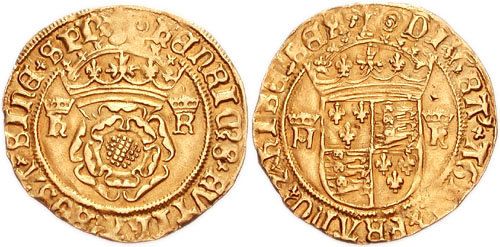The Myth and Magic of “Touch Piece” Gold
Posted onThe rarity of gold has always given the metal a mystical aura. There was a time when that aura felt real to most people. That time was the Middle Ages. Daily living was rife with disease. One of the more appalling ailments was lymphadenitis of the cervical lymph nodes, a disease associated with tuberculosis. Many called it “The Kings’ Evil.” Those suffering from the King’s Evil often searched for a cure from a monarch, not a doctor.

At the time it was believed that a touch from a monarch would cure the disease. One gentle touch from a sovereign of England or France promised freedom from the fever and malaise of sickness. Of course, getting this single touch wasn’t easy.
Few, if any, patients had access to such divine healers. Moreover, monarchs were fearful of catching the disease from contact. The solution: a coin. The Book of Common Prayer of the Anglican Church contained a ceremony describing how patients could receive the healing touch without meeting English and French monarchs. The king or queen would instead touch a coin, then offer the piece to a sufferer.
Appropriately, the coin was called an “angel.” Edward the IV introduced the coin in 1465. The relief artwork featured the archangel Michael slaying a dragon. This image represented the triumph of good over evil. At the time, the coin carried a value of 6 to 10 shillings. The popularity of the practice kept the coins in circulation through the early 18th century. Those who were sick were instructed to place the coin against the protruding abscess that was so common to the king’s evil. Minters struck the last such coin in 1634. Some patients kept the coin close to their skin wearing it around their neck at all times.
As medicine and our understanding of diseases advanced, people began to dismiss the practice. Others, supposedly cured by their touch piece went on to live long, productive lives. One such example is Dr Samuel Johnson, who helped establish the English dictionary. He was only an infant when he felt ill and received a touch piece from Queen Anne. Soon after he recovered and remained well.
Doctors of the time were largely silent on the topic of touch pieces. It’s now widely believed that physicians understood the futility of the treatment. They kept their disbelief to themselves. As author Marc Bloch writes in his book The Royal Touch: Sacred Monarchy and Scrofula in England and France, “…the idea of king’s possessing healing powers did not enter into the international literature of medicine until the sixteenth century.” At their height the coins were immensely popular. Officials minted copper and bronze versions to keep pace with demand. They were a common sight in churches and monasteries.
Eventually, in 1714, King George I deemed the practice as nothing more than superstition. The coin became another piece of currency to fall into obscurity, and out of circulation.
If you find one today, hold on to it!









